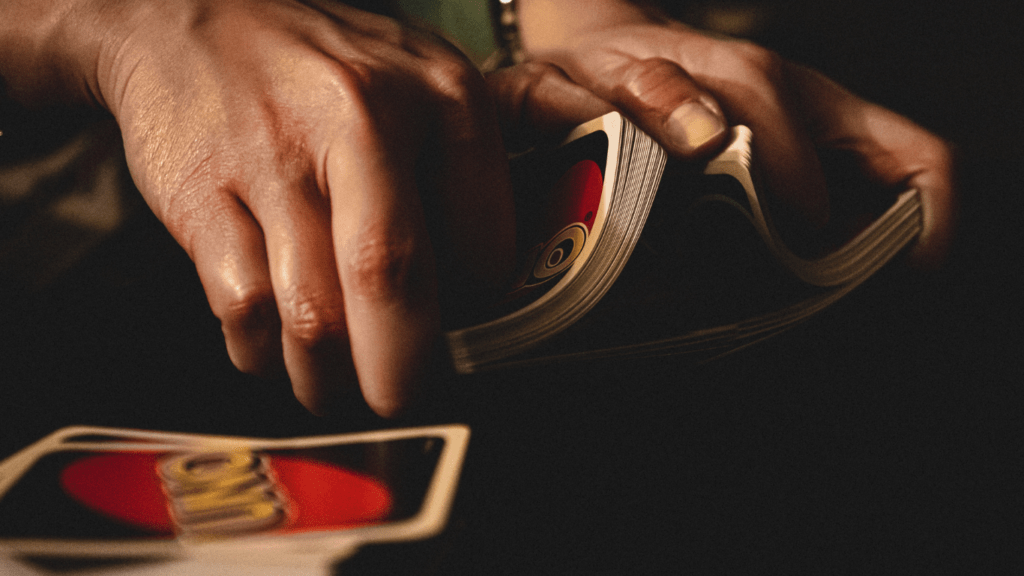When it comes to shuffling cards, two techniques often stand out: the riffle shuffle and the overhand shuffle. Each has its champions, but I’ve often wondered which one truly reigns supreme in terms of effectiveness.
Whether you’re a casual player or a serious card enthusiast, understanding the nuances of these shuffling methods can elevate your game.
Overview of Card Shuffling Techniques
Card shuffling techniques serve crucial roles in card games, ensuring randomness and fairness. Two prominent methods are the riffle shuffle and the overhand shuffle. Each technique has unique characteristics and effectiveness levels in achieving a well-mixed deck.
Riffle Shuffle
The riffle shuffle involves splitting the deck into two halves, then interleaving them. This technique promotes thorough mixing with fewer repetitions needed compared to other methods. Studies, like those from mathematicians Persi Diaconis and David Holmes, indicate that as few as seven riffle shuffles can adequately randomize a standard 52-card deck.
The sound and visual appeal of the riffle shuffle enhance the shuffling experience in many casual settings.
Overhand Shuffle
The overhand shuffle entails holding the deck in one hand, then taking small groups of cards from the top and dropping them into the other hand. While simple and easy to perform, the overhand shuffle may not provide the same level of randomness as the riffle shuffle.
Research shows that several repetitions are essential for maximizing its effectiveness, making it less efficient for serious players. This technique is, however, widely used for its accessibility during informal play.
Effectiveness Comparison
Comparative analyses of both techniques reveal that the riffle shuffle generally offers superior card mixing capabilities. It effectively rearranges the cards faster than the overhand shuffle, requiring fewer repetitions for optimal randomness.
For dedicated card players, understanding these differences can influence game strategies and enhance overall performance.
Practical Applications
Players might choose a shuffling method based on skill level and context. Casual players can favor the overhand shuffle for quick games, while serious players often rely on the riffle shuffle.
Knowing when and how to use each technique can optimize gameplay and ensure fairness.
Riffle Shuffle
The riffle shuffle is a widely recognized technique that enhances card randomness and is favored in both casual and competitive settings.
History and Origin
- Origins & Recognition: The riffle shuffle emerged in the 19th century, named after the sound of interleaved cards.
- Impact & Evolution: Widely used in gambling for fairness, it led to modern variations improving shuffle effectiveness.
Technique and Method
The riffle shuffle involves splitting the deck into two equal or nearly equal halves. I press the edges of the two halves together and release them so the cards interleave. This interleaving creates a more thorough mix than simpler methods.
Studies indicate that approximately seven riffle shuffles are necessary to achieve optimal randomness in a standard 52-card deck, where each shuffle exponentially increases the randomness level. To perform this shuffle effectively, I can choose either the standard or overhand riffle shuffle method.
The standard method provides a crisp sound, while the overhand variation offers better control. Mastery of the riffle shuffle increases both the speed and efficiency of shuffling, making it a favorite among serious players aiming for improved gameplay.
Overhand Shuffle
The overhand shuffle is a straightforward card-shuffling technique commonly used in various card games. While it may not achieve the same level of randomness as the riffle shuffle, its simplicity appeals to many players.
History and Origin
The overhand shuffle has its roots in early card games, tracing back several centuries. It evolved as people sought methods to mix cards without the need for advanced techniques. Unlike the riffle shuffle, the overhand shuffle became popular due to its ease of execution and immediate accessibility, making it a staple in informal card games.
Historical records show its use in numerous gaming contexts, allowing players to maintain fairness and mitigate any potential biases in card distribution.
Technique and Method
The overhand shuffle involves transferring small groups of cards from one hand to another. To perform it, I hold the deck in one hand, then use the fingers of my other hand to pull off a segment of cards, dropping them back onto the deck.
Repeating this process multiple times improves the card mixing, yet results vary based on the number of repetitions. Research indicates that around seven to ten repetitions can begin to provide a reasonable level of mixing, though achieving thorough randomness remains challenging.
The technique is particularly favored by casual players for its accessibility, making it suitable for quick games without the need for specialized skills.
Effectiveness Comparison
Evaluating the effectiveness of the riffle shuffle and overhand shuffle reveals distinctions in their capabilities. A closer look at statistical analyses and practical applications provides clarity on their utility.
Statistical Analysis
Research shows that the riffle shuffle achieves better randomness more efficiently than the overhand shuffle. According to a study by mathematicians at Stanford University, it takes an average of seven riffle shuffles to randomize a standard 52-card deck adequately. In contrast, the overhand shuffle often requires ten or more repetitions to achieve a similar level of randomness. These statistics highlight the riffle shuffle’s superior mixing efficiency, making it the preferred technique in serious card games.
| Shuffle Type | Shuffles Needed for Adequate Randomness |
|---|---|
| Riffle Shuffle | 7 |
| Overhand Shuffle | 10+ |
Practical Applications
The choice between riffle and overhand shuffles can influence gameplay dynamics. Riffle shuffles are standard in professional settings such as casinos and tournaments, where ensuring fairness is crucial.
Players often employ this method for card games that depend on strict randomness, like poker and bridge. In contrast, the overhand shuffle remains popular for casual settings, like family game nights, due to its simplicity and ease of execution. While the overhand shuffle is effective for quick games, players aiming for organized competitions benefit more from the swift accuracy of the riffle shuffle.


